Most people would be surprised to find out that there is only one painting in all of St. Peter’s Basilica in Rome. (It was done by the famous Renaissance artist Raphael, so it was kind of hard to turn down.) The rest of that massive space is filled with artwork, yes, but not the painted kind. Its domes and altars are covered with little pieces of stone and glass…i.e., mosaics. Wow!
Yet, St. Peter’s Basilica is not the church we’re talking about in this newsletter for two reasons. First of all, it’s not a cathedral. The cathedral church of the Bishop of Rome is on the other side of the Eternal City – St. John Lateran.
Secondly, it “only” has 33,000 square feet of mosaics on its walls. Does that sound like a lot? It is, but our museum of mosaics has literally 83,000 square feet of mosaics covering virtually every inch of its upper walls, arches, and domes.
I’ll have to give that a triple Wow.
(There is another mosaic church in St. Petersburg, Russia that claims to hold the world record for mosaics. But I’m sure that’s just Russian disinformation.)
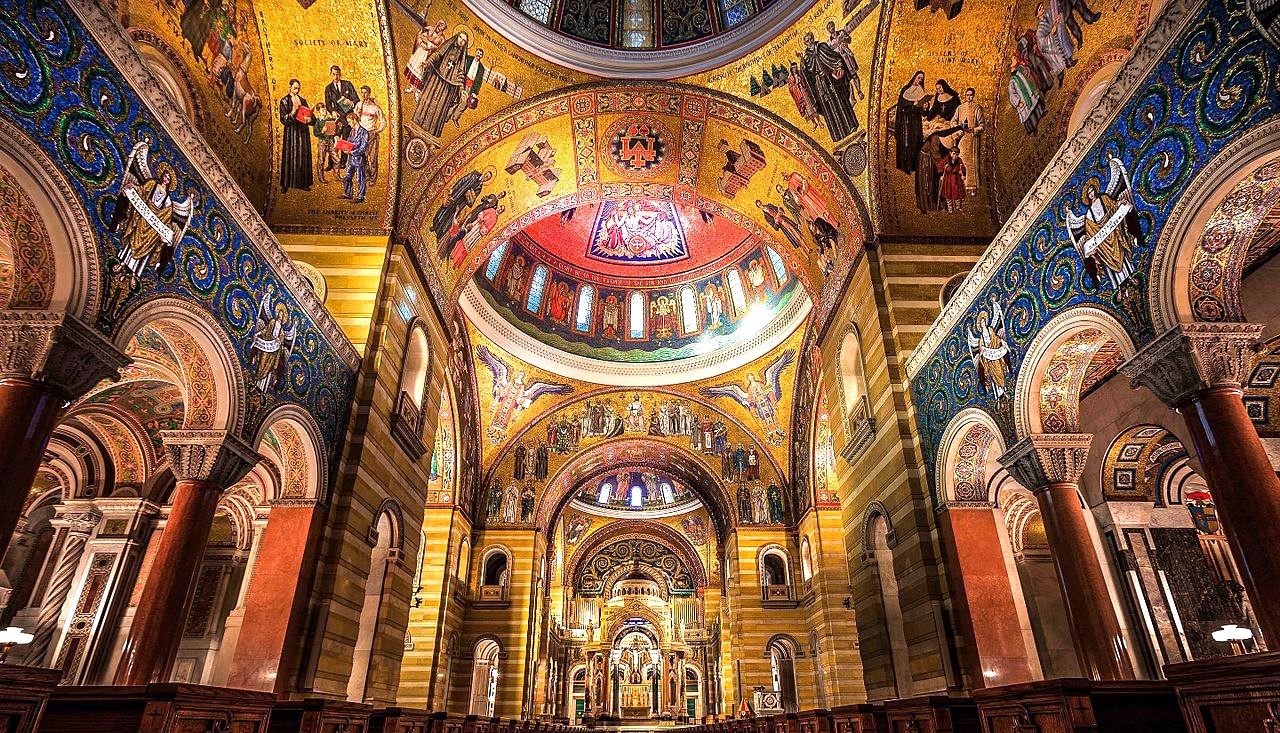
Cathedral and Basilica
 The famed mosaic church I want to consider here is the Catholic cathedral of our nation’s Gateway City, St. Louis, Missouri. The cathedral is named after the patron of the city, St. Louis IX, King of France, and its majestic green dome rises 227 feet above the earth.
The famed mosaic church I want to consider here is the Catholic cathedral of our nation’s Gateway City, St. Louis, Missouri. The cathedral is named after the patron of the city, St. Louis IX, King of France, and its majestic green dome rises 227 feet above the earth.
Now, I know that would actually look tiny in comparison to the massive 630-foot Gateway Arch for which St. Louis is so famous, but the Arch is just a simple structure of undecorated steel. Despite its impressive size, it has absolutely nothing on the magnificent temple to God’s glory that is the city’s Catholic cathedral.
The cathedral is also called a basilica because Pope John Paul II designated it as such in 1997 prior to his visit there in 1999. In simplest terms, a basilica is a type of church that has a long central aisle held up by huge pillars. The architectural style is directly related to magnificent buildings of the ancient world that showcased the dignity of kings (“basilica” comes from the Greek words, basileia and oikos, meaning “royal house”).
A church gets designated a “basilica” in the Catholic Church due to its antiquity, its great dignity, or its value as a center of worship. There are over 1700 designated basilicas in the Catholic world, each one of which is utterly magnificent – and that term certainly describes St. Louis’s mosaic cathedral.
Word Pictures
As the title says, the St. Louis Cathedral is a veritable museum of mosaics. To put a clear image on the square footage, it covers the area of nearly one and a half football fields (or, if you are a Cardinals fan, more than ten baseball diamonds), which is a pretty impressive amount of artwork, I’d say.
One more image, just to make the point: since mosaic tiles are usually smaller than the average puzzle piece, imagine how long it would take you to piece together a jigsaw puzzle larger than a football field. In this case, the answer is 76 years!
Brief History
How this is even possible becomes clear with a little sense of the Catholic history of the city. The first bishop of St. Louis was appointed in 1817 before there was even a diocese! He was sent to oversee the mission territory when St. Louis was little more than a frontier town. The Diocese of St. Louis was formally established in 1826, and soon afterward, the faithful built their first cathedral dedicated to King St. Louis IX of France.
As America grew westward, the diocese of St. Louis grew with it, and the rapidly growing Catholic population eventually needed a new cathedral. When the diocese was elevated to the status of Archdiocese in 1847, they decided to build a larger cathedral, but our Civil War and other matters delayed the construction until the 20th century.
Under the leadership of John Cardinal Glennon (1903-1946), the cathedral broke ground in 1907 and laid the cornerstone in 1908. The installation of the mosaics began in 1912 and were not even close to being finished in 1926 when the cathedral was formally consecrated.
But even though the cathedral structure was complete, the temple of worship was not considered fully complete until all the artwork was finished in 1988. So, from beginning to end, the installation process for the mosaics took three-quarters of a century!
The Catholics of St. Louis are patient if nothing else.
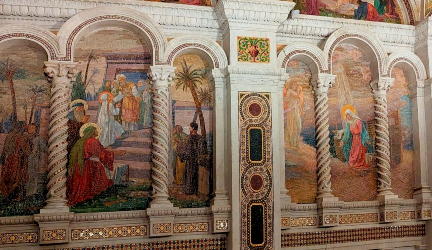
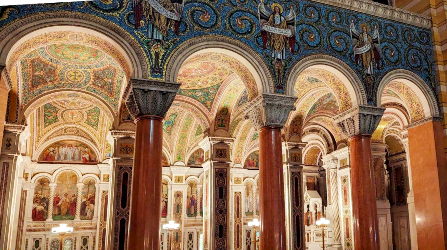
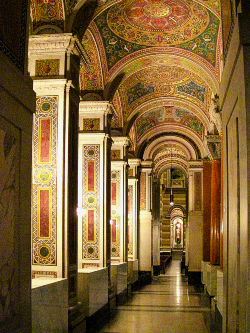
Mosaics as a Durable Artform
Buildings constructed entirely of rock and stone endure longer than any other structures, and artwork made with these materials has the same durable power. Archeology certainly witnesses to this truth.
Whoever decided to make this cathedral’s walls, altars, and domes go “full mosaic” wanted to guarantee that that the artwork would last a long, long time. It’s likely that people centuries from now will be marveling at the mosaics in St. Louis Cathedral just like we do today.
Two quick and fascinating facts about the mosaics in the cathedral: they consist of 41.5 million pieces of colored glass and encompass 7000 shades of color! I didn’t know there were that many colors in the light spectrum.
The now-defunct enterprise called the Ravenna Mosaic Company, which had been founded just to create the St. Louis Cathedral mosaics, had an inventory of that many colors set aside for the work!
Pentecost Mosaic
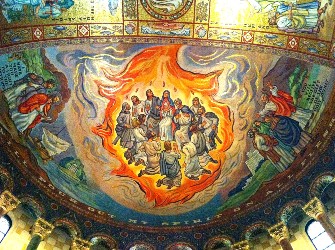
Resurrection Mosaic
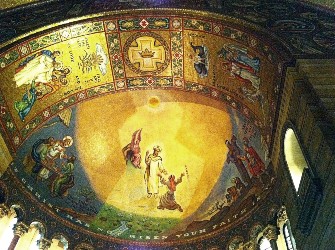
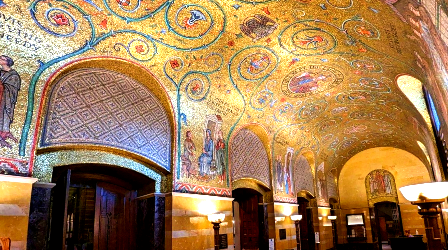
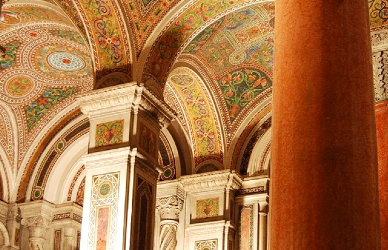
Some other distinctive features of the St. Louis cathedral and its mosaics:
- The mosaics that decorate the side chapels on the west side (the Blessed Virgin Chapel and the All Saints Chapel) as well as the sanctuary walls were designed
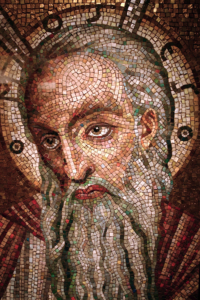
Detail of the Moses mosaic
and installed by Tiffany Studios, and it is said that the famed Louis Comfort Tiffany himself designed many of them.
- The mosaics depict many biblical scenes, but there are also sequences of mosaics featuring the life of King St. Louis IX, the history of the Archdiocese of St. Louis, and the saintly personages who contributed to the expansion of the Catholic faith in the US and in that area in particular.
- Given the length of the project, dozens of people contributed to it. One story stands out among them all: the father and son team, Paul and Arno Heuduck, spent virtually their entire working lives creating and installing the mosaics. Arno died in November of 1988, just after the last mosaic was installed.
- There is a museum in the church basement dedicated to the mosaics and 76-year history of their installation.
Mosaic by Any Other Name
The earliest examples of mosaic art (roughly 2000 BC) are found in Zoroastrian temples in Iran and consisted of colored pebbles used to create images on walls. The ancient Greeks improved on the art form by creating colored glass, but it was the Romans who gave us the word “mosaic”, which is a derivative of the Latin term for “museum”, a collection of diverse works of art. The “musaicum” was a collection of diverse colored stones or pieces of glass!
The Romans later perfected the art by placing gold leaf behind pieces of translucent glass or sandwiching gold or silver leaf in between two pieces to create a sense of depth in the image and make it shimmer as the light would fall on it at various different angles.
![]() This technique would be key to adopting the art form for religious artwork as it gave the images an ethereal look. The Byzantine (Greek) Christians virtually perfected the art of religious mosaics. This image of Christ from the Church of Hagia Sophia in Constantinople is just one magnificent example.
This technique would be key to adopting the art form for religious artwork as it gave the images an ethereal look. The Byzantine (Greek) Christians virtually perfected the art of religious mosaics. This image of Christ from the Church of Hagia Sophia in Constantinople is just one magnificent example.
By the time of the high Renaissance in the 1500s, mosaic work had been largely eclipsed by fresco and oil painting, but Pope Gregory XIII single-handedly breathed new life into the art form when he decided that the interior of new St. Peter’s Basilica would consist entirely of mosaics.
He had a medieval mosaic of the Apostle Peter by Giotto installed above the main entrance to St. Peter’s to symbolize the continuity of the old basilica with the new.
Since that time, the Vatican has maintained a school of mosaic art, which exists even to the present day both to preserve the many mosaics in the basilica and to train artists in the technique. (They also sell gorgeous mosaic works, which is a huge money-maker for the Vatican, but you didn’t hear that from me.)
Three Focuses
If you ever have the blessing of visiting the cathedral of St. Louis, you could be overwhelmed at the totality of all the artwork. So, follow this very simple break down for your mosaic tourism – domes, saints, and scriptures – and you will view the full measure of beauty that streams through these sacred mosaic windows. Oh, and don’t forget to bring binoculars to get the details.
Domes
Needless to say, the three domes of the cathedral are filled with magnificent mosaics, and each one is a distinct wonder in itself. Here they are in red, blue, and amber.
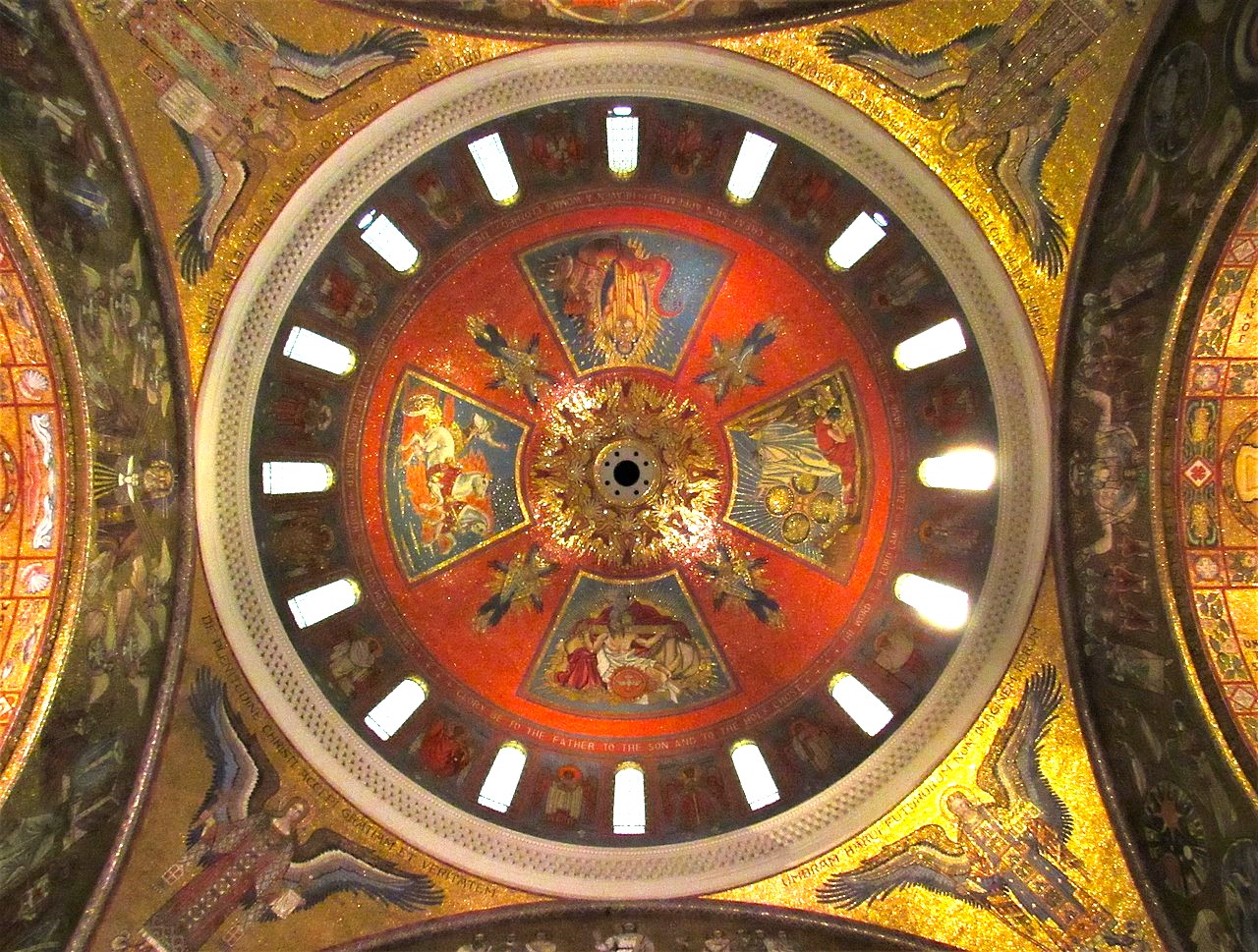
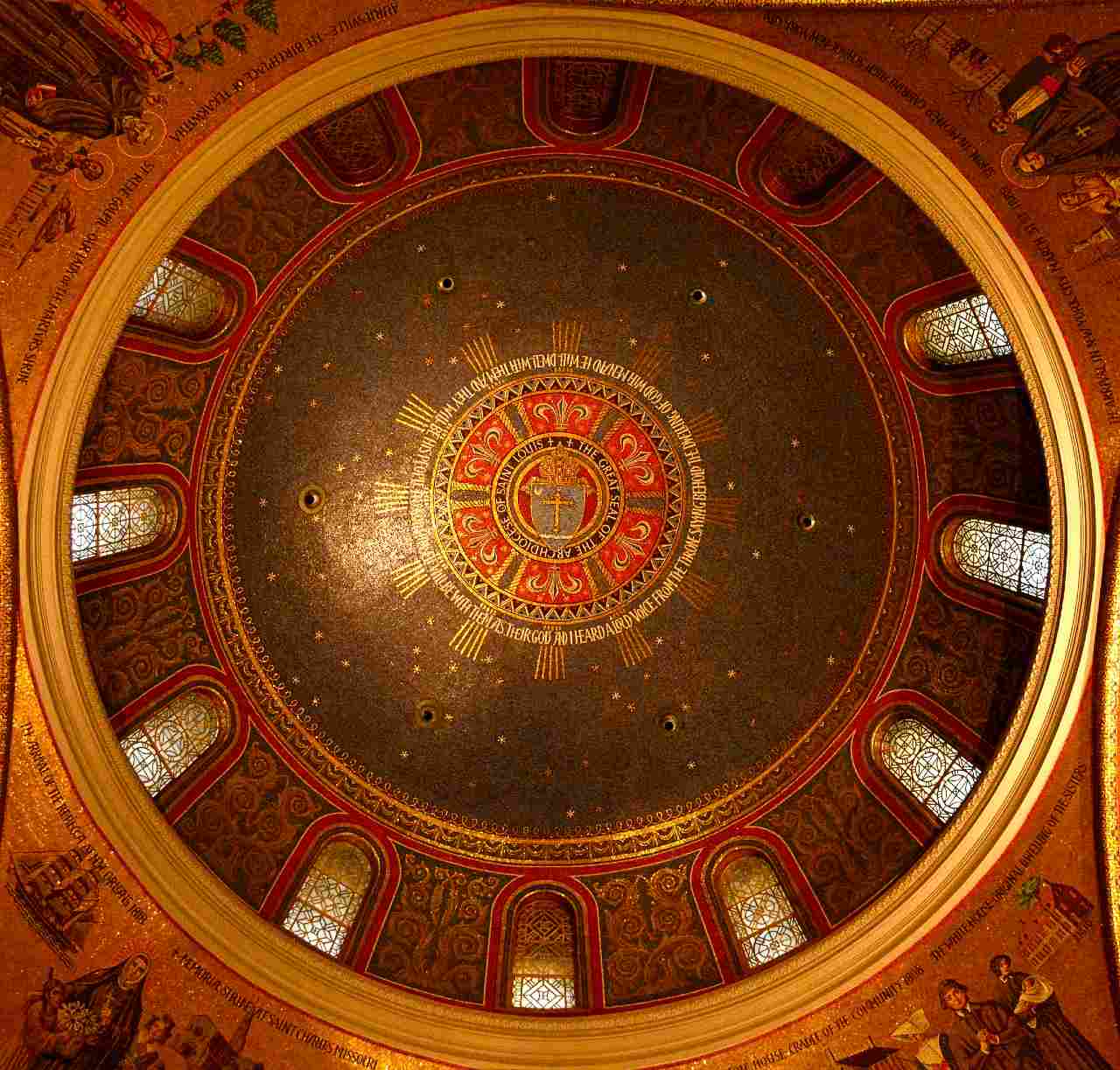
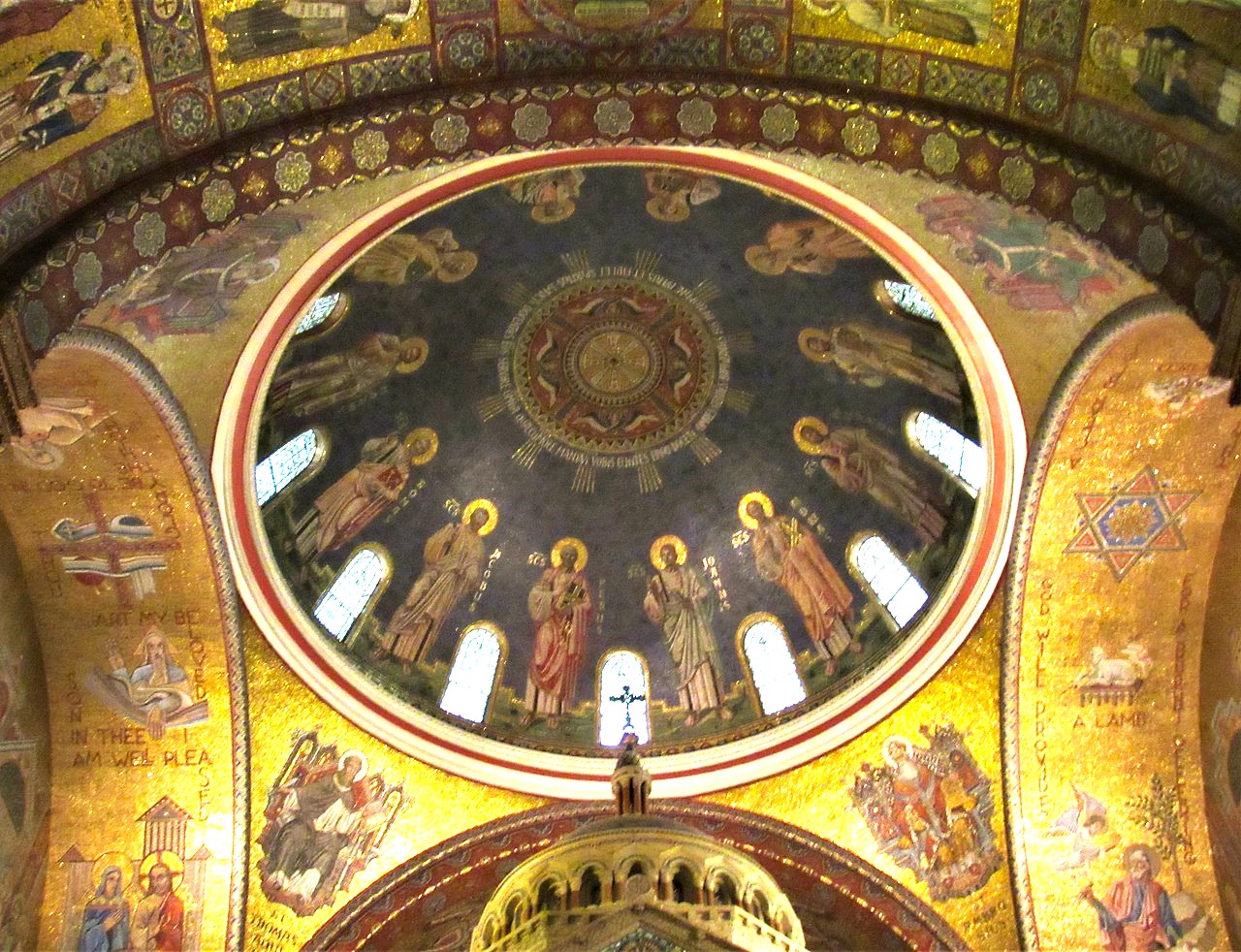
Saints
Also, don’t miss the saints that sit under the domes and hold them up, as it were. You can spot some great American saints whose images fill the triangular joint areas which connect a lower wall or pillar with a dome above.
The mosaics below literally give us a short history of American sanctity: Mother Cabrini, St. Rose Philippine Duschene (the “local saint” of the Archdiocese of St. Louis), and the North American Martyrs.
And, speaking of saints, you can view the life and acts of the cathedral’s patron saint, King St. Louis IX in the foyer which is dedicated entirely to him.
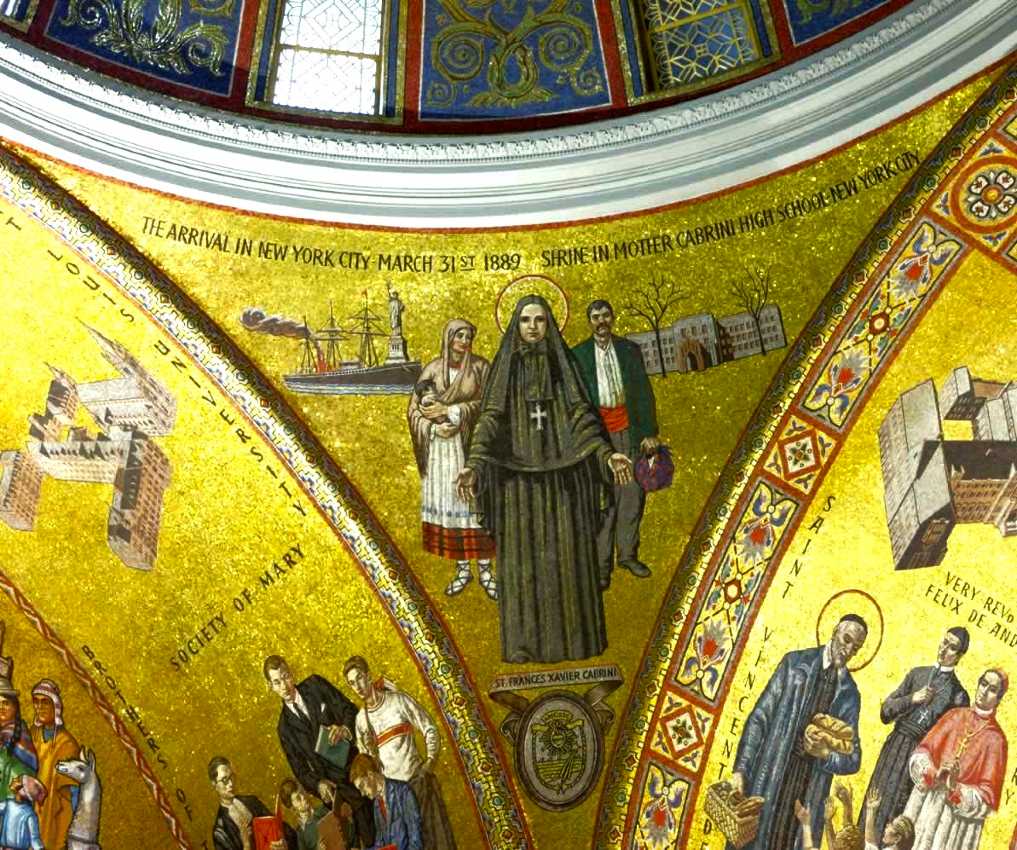
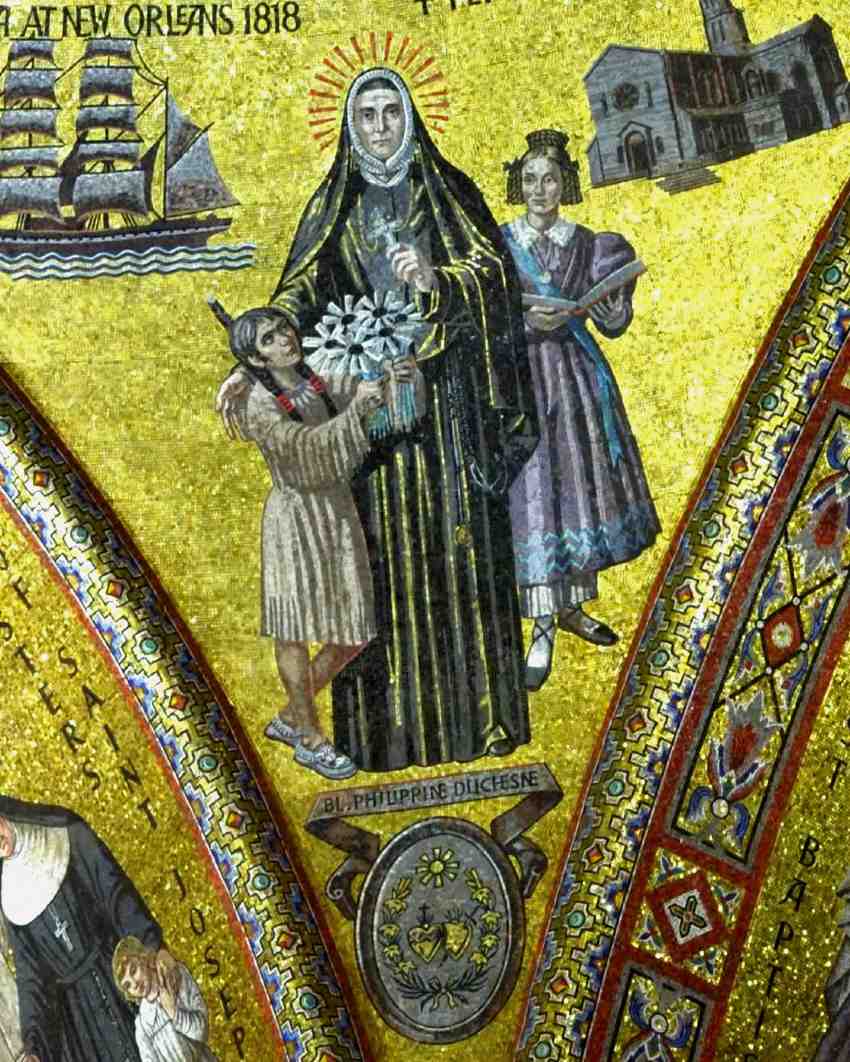
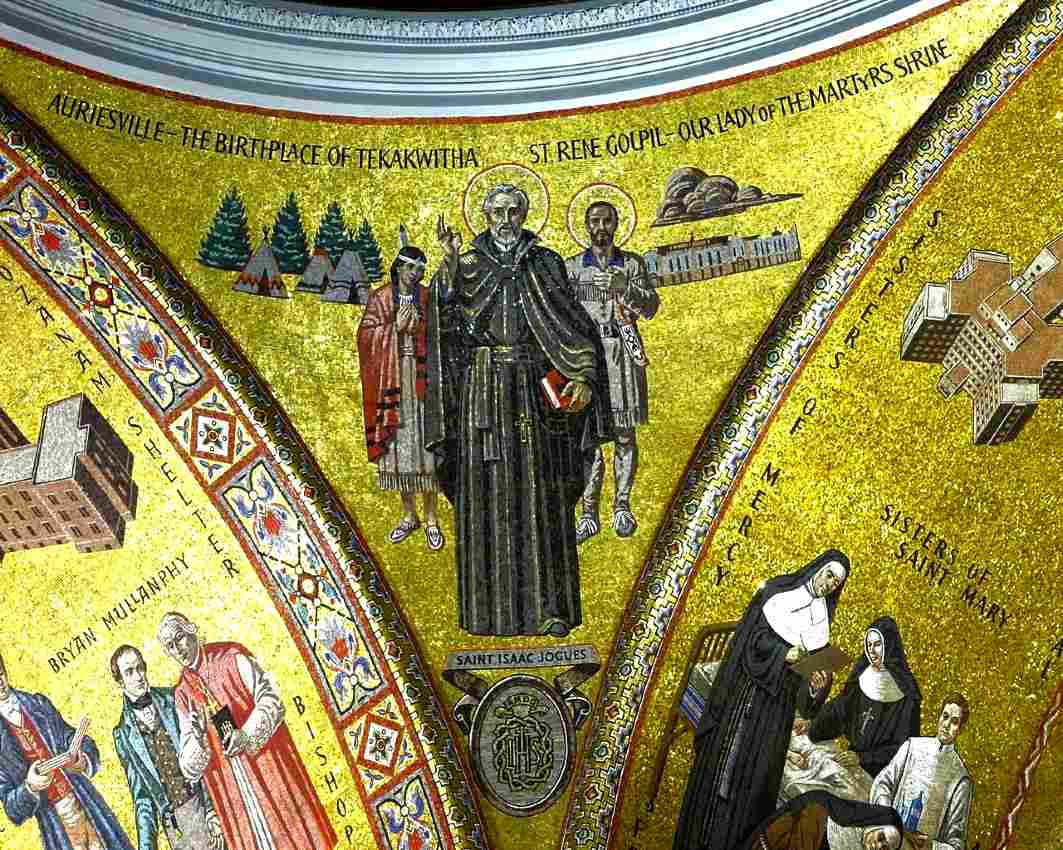
Scriptures
Finally, don’t miss the biblical scenes that can be found all around the basilica, as typified by the Pentectost and Resurrection mosaics shown above.
On a final note, what you will not find throughout this immensely decorated space, though, is a unified artistic style for all the mosaics. They were created by numerous teams of artisans over a 76-year period, so you will see a diversity of styles and genres, which, in my opinion, adds to the truly unique character of this majestic house of God.
To cap off our discussion of mosaics, let’s end where we started, with St. Peter’s Basilica in Rome. St. Peter’s has greater size, grandeur, and authority than perhaps any other church on earth, and it even has its own school of mosaic art.
Yet… let’s admit that even the great St. Peter’s must bow to America’s St. Louis Cathedral Basilica in the splendor of its mosaic beauty!
———-
[Note: This article is a reproduction of the Sacred Windows Email Newsletter of 7/23/23, so it does not end with the regular Soul Work section. Please visit our Newsletter Archives.]
Photo Credits: Images via Wikimedia Commons: (King St Louis) Francisco Pacheco, Public domain; (Hagia Sophia) Dianelos Georgoudis, CC BY-SA 3.0; (Saints) Andrew Balet, CC BY-SA 2.5; (Pentecost and Easter) Pete unseth, CC BY-SA 4.0; (Domes Red and Blue) Farragutful, CC BY-SA 4.0; (Dome Amber) Tiger Craven, CC BY-SA 4.0; (Moses) TheWB, CC BY-SA 3.0; (Aisle) QuartierLatin1968, CC BY-SA 3.0; (Cathedral Exterior) A.reyestena, CC BY-SA 4.0. Also, side aisle scenes from Tripadvisor; Tiffany angel, public domain.
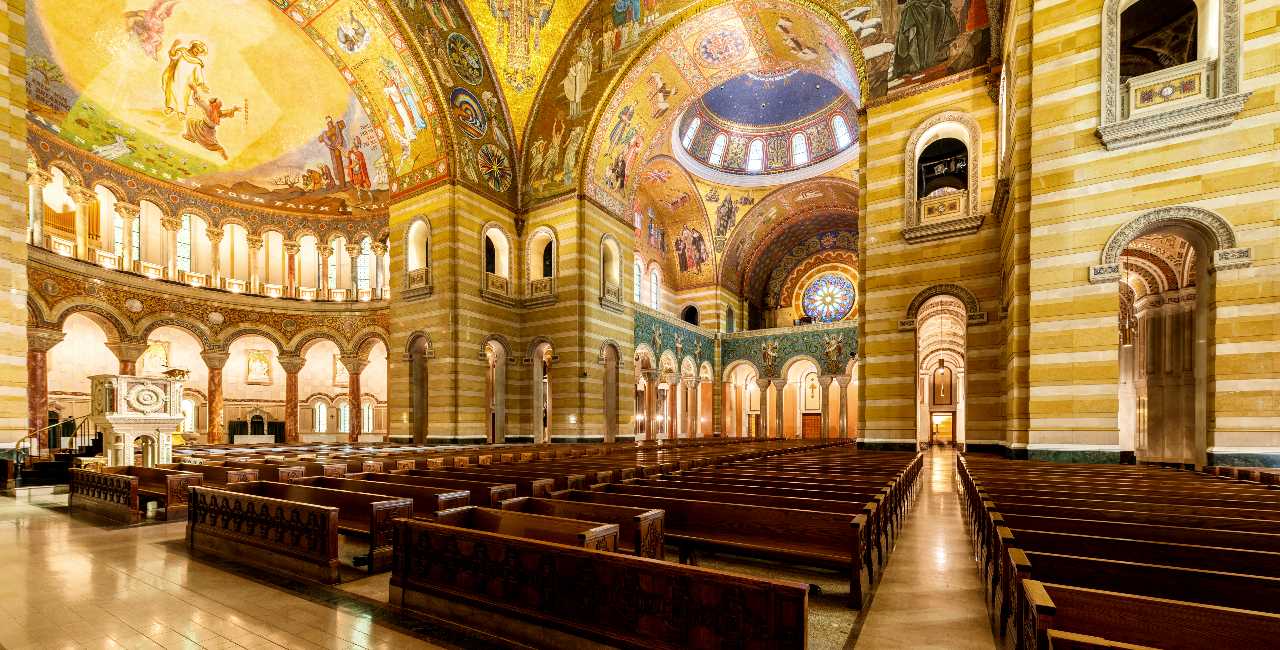

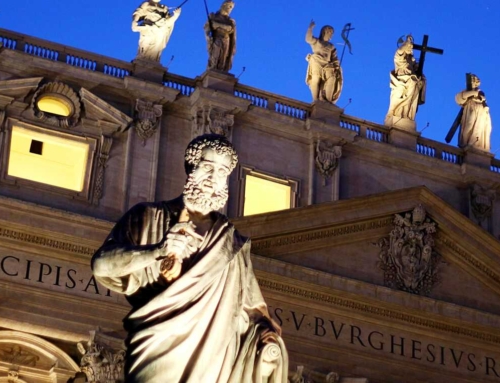
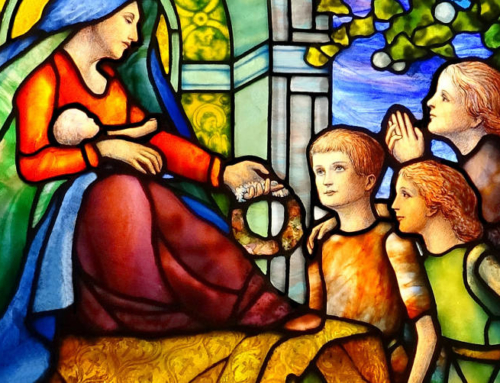
Leave A Comment